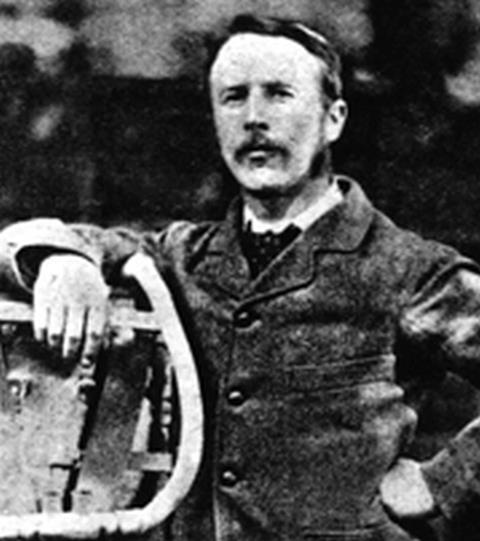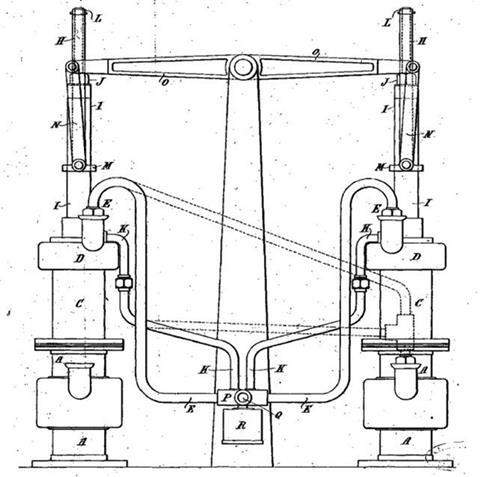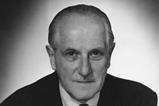A deep dive into vacuum technology

It is my business to move molecules around. In the lab I routinely pump, squirt, dribble and blow fluids; even at home I shove air into the tyres of my bicycle using a piston and cylinder arrangement, the track pump. Try as I might, I cannot escape the echoes of distant thoughts and experiments in the 17th century.
Around 1643, two of Galileo Galilei’s students, Vincenzo Viviani and Evangelista Torricelli, famously succeeded in prying apart an empty space in their lab that they concluded was that Aristotelian anathema, the vacuum; Torricelli also suggested that the previously imponderable air actually had a weight.
In 1650, the brewer and diplomat Otto Guericke would invent a way of creating vacuums by moving the air inside a cylinder with a piston, using leather flaps as non-return valves – effectively an early bike(-less) pump. Guericke’s famous public demonstration, conducted in 1657, that two half-metre hemispheres, evacuated internally, could not be pulled apart by two teams of eight horses, was so spectacular that it contributed to a growing vacuum fever.
Air pumps became must-have accessories for wealthy, fashionable gentlemen
Taking a cue from Guericke, Robert Hooke built a piston and cylinder arrangement for Robert Boyle, a beautiful brass gadget in a wooden frame that could be cranked up and down to evacuate a glass chamber – it was part experiment and part peep show. Across Europe instrument makers, notably Francis Hauksbee, built variants, often with two cylinders working together to speed up the evacuation. Air pumps became must-have accessories for wealthy, fashionable gentlemen wishing to dabble in natural philosophy. Joseph Wright of Derby’s painting An Experiment on a Bird in the Air Pump captures the mixture of fascination and disquiet that these public ‘experiments’ produced.
But the pumps were limited by the leather from which the valves were made. Even the best pumps struggled to achieve vacuums below a couple of millimetres of mercury and it was only Heinrich Geissler’s and Hermann Sprengel’s liquid mercury pistons that opened the age of low pressure. These pumps made possible so many of the great experiments that would lead to our understanding of the atom and its constituents. But the pumps were very slow, the mercury needing to be physically moved up or down to get the pumps to work.
At the turn of the 20th century an inventor with experience in diving equipment developed a new, much faster pump, based on the Haukesbee double cylinder principle, but benefiting from almost two centuries of progress in machining; the precision tools that had enabled steam engines changed everything.
Henry Albert Fleuss, the son of a German art teacher, left school to work as a merchant seaman. During his time at sea he saw some rather primitive diving operations and began to ponder how to design better equipment that might not require the pump and tubes that made the whole process so cumbersome. He began devoting his spare time to studying chemistry and physiology. Returning to Britain at age 27, he approached the engineering firm of Siebe & Gorman with a ‘diving dress’ complete with a CO2 scrubber and oxygen tank; he made quite a public splash by spending an hour under water in a glass tank at the Polytechnic in London’s Regent Street. The suit would prove its worth when flooding affected the construction of the Severn Tunnel linking England to Wales. After developing kit for use in coal mines, Fleuss, who had an apparently inexhaustible flow of ideas, moved on.

In 1887 he patented a pump for rapidly generating ice by evaporation, in which air was drawn in from the bottom of the cylinder when the piston was raised and then driven upwards past a non return valve built into the piston on the downstroke. With oil-soaked leather seals the pump gave a really superior vacuum. Its 1892 successor could be used either as a pump or a compressor. In 1907, he unveiled what he called the ‘Geryk’ pump, consisting of a pair of pumps operating out of phase to make the suction continuous. The speed was remarkable – the Geryk could reach 10-5 mmHg in a matter of minutes where mercury would take over an hour. It was no contest, especially as an electric motor could replace the rather tedious hand crank. Mercury pumps were doomed just as particle physics and chemistry were coming into their own.
Fleuss would continue to invent and patent manically and creatively, including tubeless bike tyres and an intriguing hybrid mercury-filled electric scroll pump. His popular Geryk would be displaced by Wolfgang Gaede’s rotary pumps, whose success was assured by Gaede’s close partnership with the Leybold Company. Though piston cylinders may not give us vacuum today, syringe pumps allow us to control the preparation of rings, polymers and nanoparticles, while oil-filled rams lift apparatus and compress matter to unimaginable pressures. You might try to cycle away from the piston cylinder but you can’t hide.

















No comments yet